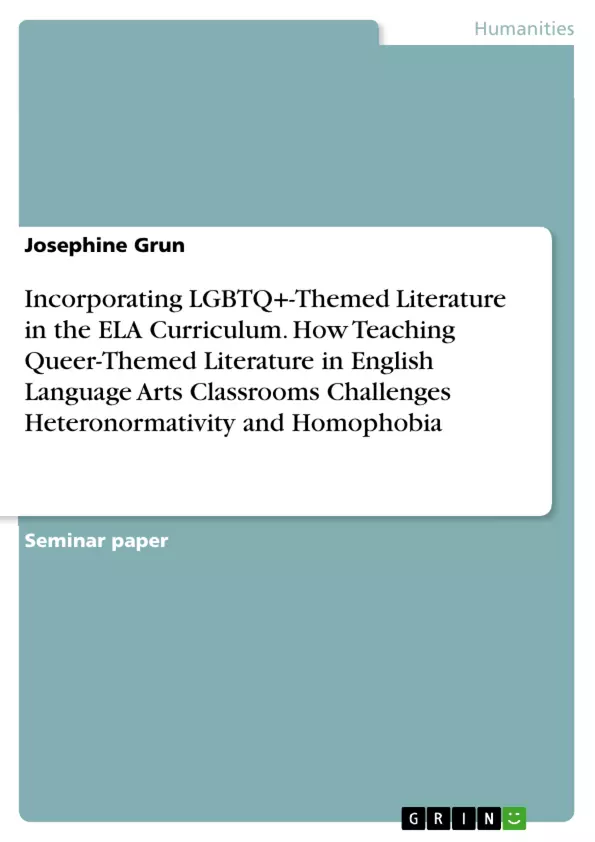This analysis aims to highlight the importance of incorporating LGBTQ+-themed literature into the English Language Arts (ELA) curriculum in U.S. high schools. The inclusion of such literature is proposed to create an environment where LGBTQ+ students feel safe, valued, and respected.
The text primarily examines the role and standards of ELA education in relation to the literary canon and the impact of the lack of queer representation on LGBTQ+ students. It argues that including LGBTQ+-themed literature in the ELA canon would lead to a more inclusive and safer educational environment.
Inhaltsverzeichnis (Table of Contents)
- 1. Introduction: Queer Youth in U.S. Schools
- 2. English Language Arts Education: Standards and the Canon
- 3. The Lack of Queer Representation and its Consequences
- 4. The Impact of Queer-Inclusive ELA Curricula
- 5. Conclusion
Zielsetzung und Themenschwerpunkte (Objectives and Key Themes)
This paper examines the impact of teaching queer-themed literature in English Language Arts classrooms on the experiences of LGBTQ+ students in U.S. high schools. It argues that including LGBTQ+ literature with positive queer representation in the ELA canon can contribute to a safer and more inclusive school environment, while challenging heteronormativity and homophobia.
- The prevalence of LGBTQ+ identities among younger generations, particularly Generation Z.
- The lack of queer representation in traditional ELA curricula and the negative consequences for LGBTQ+ students.
- The potential of queer-inclusive ELA curricula to create a more welcoming and affirming school environment for LGBTQ+ students.
- The importance of challenging heteronormativity and homophobia in educational settings.
- The role of literature in promoting empathy, understanding, and social change.
Zusammenfassung der Kapitel (Chapter Summaries)
- Chapter 1: Introduction: Queer Youth in U.S. Schools: This chapter introduces the increasing visibility of LGBTQ+ identities among young Americans, particularly Generation Z. However, it also highlights the prevalent unsafe and hostile environments faced by LGBTQ+ students in U.S. schools, rooted in anti-LGBTQ+ language, harassment, and lack of representation.
- Chapter 2: English Language Arts Education: Standards and the Canon: This chapter explores the historical development of English language arts education and the concept of the literary canon. It examines the enduring influence of the canon and the role of teaching standards, such as the Common Core Standards, in shaping ELA curriculum.
- Chapter 3: The Lack of Queer Representation and its Consequences: This chapter analyzes the lack of LGBTQ+ representation in the traditional ELA canon and its impact on LGBTQ+ students. It argues that the heteronormative nature of the existing curriculum contributes to an unwelcoming environment for LGBTQ+ students, perpetuating feelings of invisibility and marginalization.
Schlüsselwörter (Keywords)
The paper focuses on key terms and concepts such as LGBTQ+ representation, queer-inclusive curriculum, ELA education, heteronormativity, homophobia, transphobia, literary canon, and the impact of literature on social change. The research examines how these concepts intersect within the context of U.S. high school classrooms, highlighting the need for a more inclusive and diverse approach to ELA education.
- Quote paper
- Josephine Grun (Author), 2021, Incorporating LGBTQ+-Themed Literature in the ELA Curriculum. How Teaching Queer-Themed Literature in English Language Arts Classrooms Challenges Heteronormativity and Homophobia, Munich, GRIN Verlag, https://www.hausarbeiten.de/document/1433677


